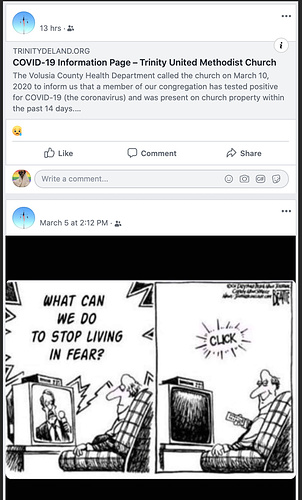This is a ridiculous take. .6% mortality is achievable with extensive testing and a non-stressed first world caliber medical system. That’s the only conclusion that we can definitively make right now. Meanwhile, it looks like over-stressed medical systems see a death rate of at least 3-4%. Italy is at 6.6% right now. I can’t find the perfect numbers, but Hubei Deaths / Hubei Deaths & Recoverys gives you 5.7%. Iran is at 4.2% and I think we all know they’re underreporting deaths drastically.
What about first world countries that aren’t testing as widely as South Korea, but aren’t yet overloaded? France 2.1%, Spain 2.4%, US 2.4%. Germany is exceptionally low at .1%, that bears watching over the coming days as that sample size grows.
Now, it’s impossible to say exactly what the breakdown is between more testing = a more accurate MEASURED overall mortality rate and more testing = reducing the ACTUAL overall morality rate by slowing the spread and starting treatments earlier.
I think it’s more reasonable to say .6% mortality is the floor than it’s the ceiling, and numerous places around the world will have over-stressed medical systems and death rates that are far higher.
Mid to long term, that’s probably true. In the short-term the US needs people to self-isolate to flatten our curve and save lives. Once the curve is flat, it’ll be appropriate to figure out who needs to still stay pretty isolated and who does not.
Even if this is true, and I’m not saying it is, we know it can live longer and we should have people taking precautions accordingly.
If I was healthy, no risk factors, under 40, I wouldn’t mind going to an open-air cafe with at least 6 feet between customers, or a restaurant with good ventilation and that kind of spacing… But I’m not real interested in touching things people have touched who could be carrying it, or eating food others have prepared.
I think we need to be mindful to lift some of these things once we flatten the curve, but not before that. There comes a time when there are diminishing returns on the lockdown saving lives from COVID-19 and increasing harm done to people due to the economic impact. Figuring out that intersection and getting that decision right is pretty key.
This would be true if we mitigated it well from the start. If we had done 1.5 million tests by now, all the hospitals were ready with expanded capacity and expanded ICU’s and extra respirators, etc, I’d be inclined to agree. We missed that opportunity, so now the purpose of the getting people to stay home is to slam the brakes on for a couple weeks and try to flatten the curve as sharply as possible.
Not all of us told you these were overreactions, FWIW.
I’ve had three conversations today where I had to teach friends who hadn’t been paying attention or who even made fun of me for overreacting everything I could about COVID-19, what’s going to happen, the range of possibilities, and what they need to do… and while of course I’m going to do it for them because they’re my friends and I care about them, it’s definitely annoying to have to do this 3x today when I did it 3x two weeks ago and they ignored it and it was in one ear and out the other.
Now in two weeks when they’re apoplectic over the body count and I’m dealing with it better because I cried about it today, they’re going to be like WTF is wrong with you, why aren’t you upset? This has played out a few times in the Trump era for me with stuff. It’s always the same, it’s like, hey, I was doing what you’re doing now two weeks ago.
